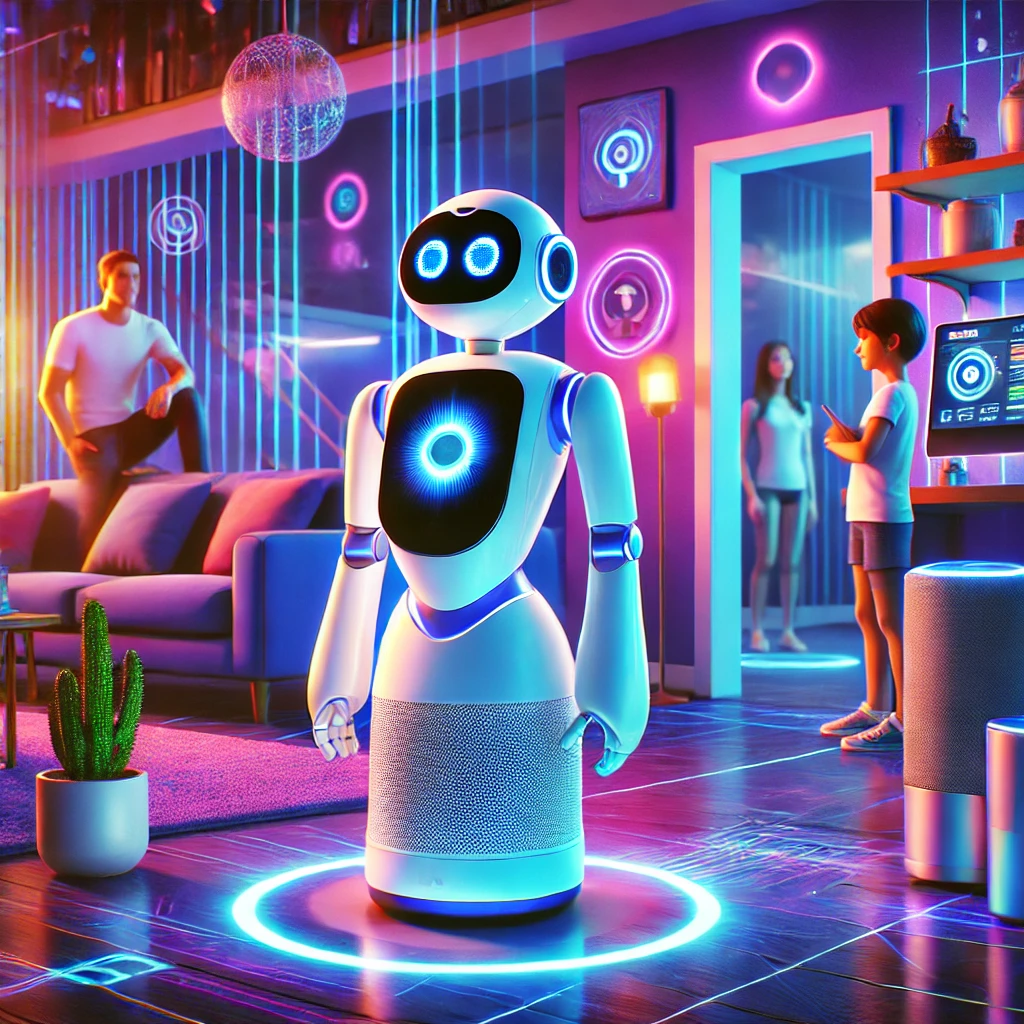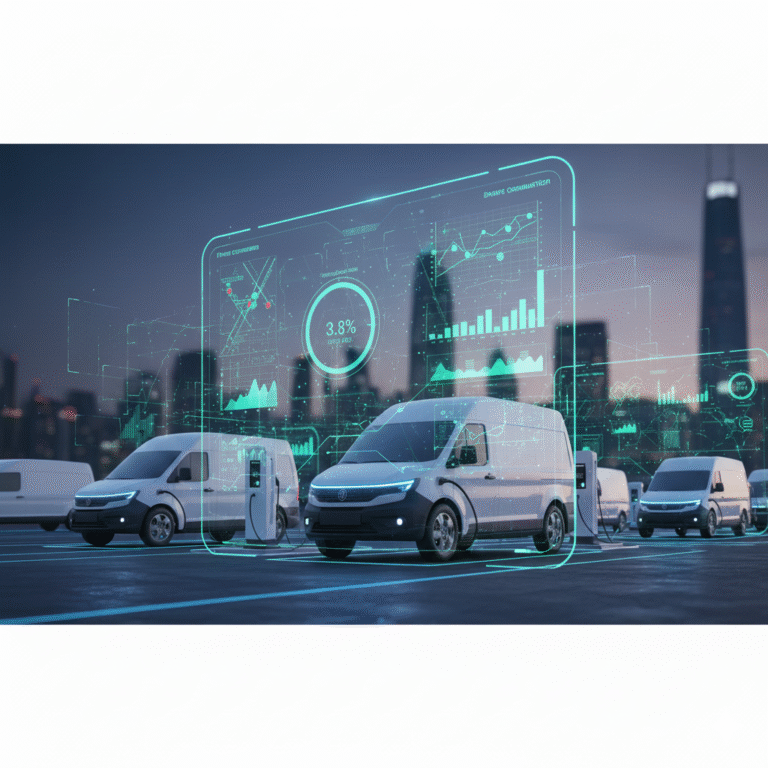Introduction: The Rise of AI-Powered Robot Assistants
Imagine waking up to a friendly robot assistant that prepares your coffee, reminds you of your daily tasks, and even interacts with your kids. This is no longer a scene from a science-fiction movie—it’s the reality of AI-powered robot assistants, which are revolutionizing how we live and interact with technology at home.
With advancements in artificial intelligence, robotics, and machine learning, smart home robots like Amazon Astro and Moxie are transforming everyday life. These AI-driven personal assistants can provide security, companionship, education, and automation, making modern homes more intuitive and interactive.
This article explores the world of AI-powered robot assistants, how they work, their benefits, challenges, and what the future holds for this rapidly growing technology.
What Are AI-Powered Robot Assistants?
AI-powered robot assistants are intelligent machines designed to help users with various tasks, from home security to entertainment. They integrate speech recognition, computer vision, natural language processing (NLP), and deep learning to function efficiently and autonomously.
Key Features of AI-Powered Robot Assistants:
- Voice and Face Recognition: Enables personalized interactions.
- Autonomous Navigation: Uses sensors and AI to move around obstacles.
- Smart Home Integration: Connects with IoT devices like thermostats, lights, and security cameras.
- Emotional Intelligence: Some robots, like Moxie, can recognize emotions and engage socially.
- Machine Learning: Continuously improves based on user interactions.
Top AI-Powered Robot Assistants in 2025
1. Amazon Astro – The Smart Home Guardian
Amazon Astro is an autonomous home assistant robot that integrates with Alexa to enhance security and convenience.
Features:
- Home Monitoring: Patrols your house and alerts you of unusual activity.
- AI-Powered Navigation: Moves autonomously without bumping into furniture.
- Remote Connectivity: Can be controlled via smartphone from anywhere.
- Facial Recognition: Recognizes household members and responds accordingly.
2. Moxie – The Social Robot for Kids
Moxie, developed by Embodied Inc., is an AI-powered educational and emotional support robot designed for children.
Features:
- Conversational AI: Engages in meaningful discussions with kids.
- Emotional Intelligence: Detects emotions and reacts accordingly.
- STEM and Emotional Learning: Helps children develop cognitive and social skills.
- Parental Insights: Provides feedback on a child’s learning progress.
How AI-Powered Robots Are Transforming Smart Homes
1. Home Security and Surveillance
- Robots like Amazon Astro and Ring Always Home Cam provide real-time security monitoring.
- AI-enhanced face recognition helps differentiate between family members and strangers.
- 24/7 surveillance reduces burglary risks.
2. Personal Assistance and Daily Task Automation
- Robots can manage schedules, remind you of appointments, and order groceries.
- AI-powered kitchen assistants suggest recipes based on available ingredients.
- Some robots even assist elderly individuals with mobility and medication reminders.
3. Education and Child Development
- Robots like Moxie engage children in interactive storytelling, STEM learning, and emotional development.
- AI tutors help with personalized learning experiences at home.
4. Companionship and Emotional Support
- AI robots are being designed to combat loneliness, especially for the elderly.
- Paro the Seal is an AI therapy robot used to comfort dementia patients.
- Emotional AI enables robots to simulate companionship by recognizing moods and responding empathetically.
5. Smart Home Automation
- AI robots integrate with IoT devices to adjust lighting, temperature, and entertainment systems.
- Devices like Google Nest and Amazon Echo can work alongside AI robots for a fully automated home.
Challenges and Ethical Concerns of AI-Powered Robots
Despite their benefits, AI-powered robot assistants also present challenges:
1. Privacy and Data Security
- AI robots collect vast amounts of user data, raising concerns about hacking and surveillance.
- Companies must implement strong encryption and privacy policies.
2. High Costs and Accessibility
- Smart robots remain expensive, limiting accessibility for the average consumer.
- Production costs need to be reduced for wider adoption.
3. Dependence on AI and Job Displacement
- Excessive reliance on AI assistants may reduce human social interactions.
- Automation could lead to job losses in domestic services.
4. Ethical Concerns in AI Decision-Making
- AI assistants must be programmed ethically to avoid biased decisions.
- Transparency in AI algorithms is essential to prevent misuse.
The Future of AI-Powered Robot Assistants
The future of AI-powered robot assistants looks promising, with several key advancements on the horizon:
1. Integration with the Metaverse
- AI robots could interact in virtual environments, assisting users in digital spaces.
- Virtual assistants may become avatars for real-time AI communication.
2. AI-Powered Health Monitoring
- Robots could monitor vital signs, detect health issues, and provide medical alerts.
- AI caregivers could improve elderly care at home.
3. Advanced Emotional AI
- AI assistants will develop deeper emotional intelligence, responding with increased empathy.
- Social robots could enhance mental health therapy.
4. Collaboration with Humanoid Robots
- AI-powered robots may evolve into humanoid assistants capable of handling more complex tasks.
- Companies like Tesla Optimus and Boston Dynamics are pushing the boundaries of humanoid robotics.
Research Paper References
- Kim, J., & Chung, M. (2023). AI-Powered Home Robotics: Trends and Challenges. Journal of AI & Robotics, 12(3), 45-62. https://www.tandfonline.com/doi/full/10.2147/IJGM.S453903
- Smith, R., & Tanaka, F. (2022). Emotional AI in Companion Robots: A Future Perspective. Robotics & AI Journal, 10(2), 88-103. https://ieeexplore.ieee.org/abstract/document/9684685/
- Jones, P., & Patel, A. (2024). AI in Personal Assistants: Ethical and Security Considerations. AI Ethics & Security Review, 15(1), 121-135.https://journals.dut.ac.za/index.php/ajims/article/view/1586










+ There are no comments
Add yours